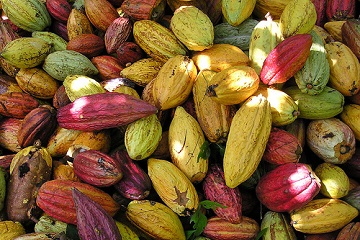A Group of Researchers of IPB Utilized Cocoa Husks to Improve the Quality of Tilapia Feeds

The demand for increased fish production in turn increased the number of people involved in fish farming and the number of species cultured to more than 25. The feeding methods of most cultured fishes are still largely traditional and based on experience using trash fish, rice bran, and broken rice. It was only recently that aquaculture began using feeds to increase production. The culture of fish is gaining importance, but local fish farmers face a set back because of the stoppage on importation of fish feed. Thus, it will be the constraints of making fish feed as some of its raw materials are still imported. While the substitution of raw materials of fish feed that can be done is by utilization of agro-industry side product. A group of researchers of the Department of Aquaculture, of the Faculty of Fisheries and Marine Sciences, of Bogor Agricultural Institute (FPIK IPB), Dedi Jusadi, Julie Ekasari and Azis Kurniansyah tried to improve the quality of cocoa skin by adding rumen fluid of sheep to feed the fish with.
"So far, only cocoa beans are used for export commodities. The beans are the basis of chocolate, while other parts have not been optimally utilized. The husks of the cacao bean (Kulit buah kakao – KBK) contains about 6.3 percent protein, 24 percent crude fiber, and 0.5 percent crude fat. The main obstacles in the utilization of cocoa fruits as raw materials of fish feed is low protein content, high fiber, low fat and the presence of substances antinutrisi," he said.
Faculty member of the Department of Aquaculture, of FPIK IPB added, the slaughter houses are everywhere in Indonesia, they are very potential as a source of enzymes. Rumen microbes secrete digestive enzymes into the rumen fluid to help digest food particles. "These enzymes include cellulase enzymes to digest cellulose, hemicellulase / xylanase for hemicellulose / xylose," he said.
In this experiment, the first stage was to evaluate the addition of rumen sheep fluid enzyme in reducing the crude fiber content of cacao husks. In this first stage, the rumen fluid enzyme was added into different concentrations of cacao husks, at 0, 50, 100, and 150 milliliters/Kg, with different incubation periods for 0, 12, and 24 hours.
In the second phase of the experiment, the researchers investigated at the digestibility of feed with the additional of the best-dosed cocoa husks as the result of first stage treatment and the cocoa husks without hydrolysis. The fish used for this experiment type was tilapia with an average weight of 3.86 grams stocked with a density of 15 fishes per aquarium and maintained for 15 days. The fish were fed test containing Cr2O3 indicator and then collected its feses for further analysis of digestion.
The study revealed that hydrolysis of KBK by using 150 milliliter rumen fluid per kilogram with the incubation time of 12 hours and 24 hours has the lowest in crude fiber of KBK, namely 21.38 percent and 21.67 percent. For its digestibility test, it showed that the value of digestibility of improved KBK materials was higher (33.95 percent) compared with standar KBK (10.97 percent).
Thus the team concluded that the addition of rumen sheep fluid enzymes can reduce the coarse fiber content of the cocoa husks and improve its digestibility for tilapia feed. (Wied)



